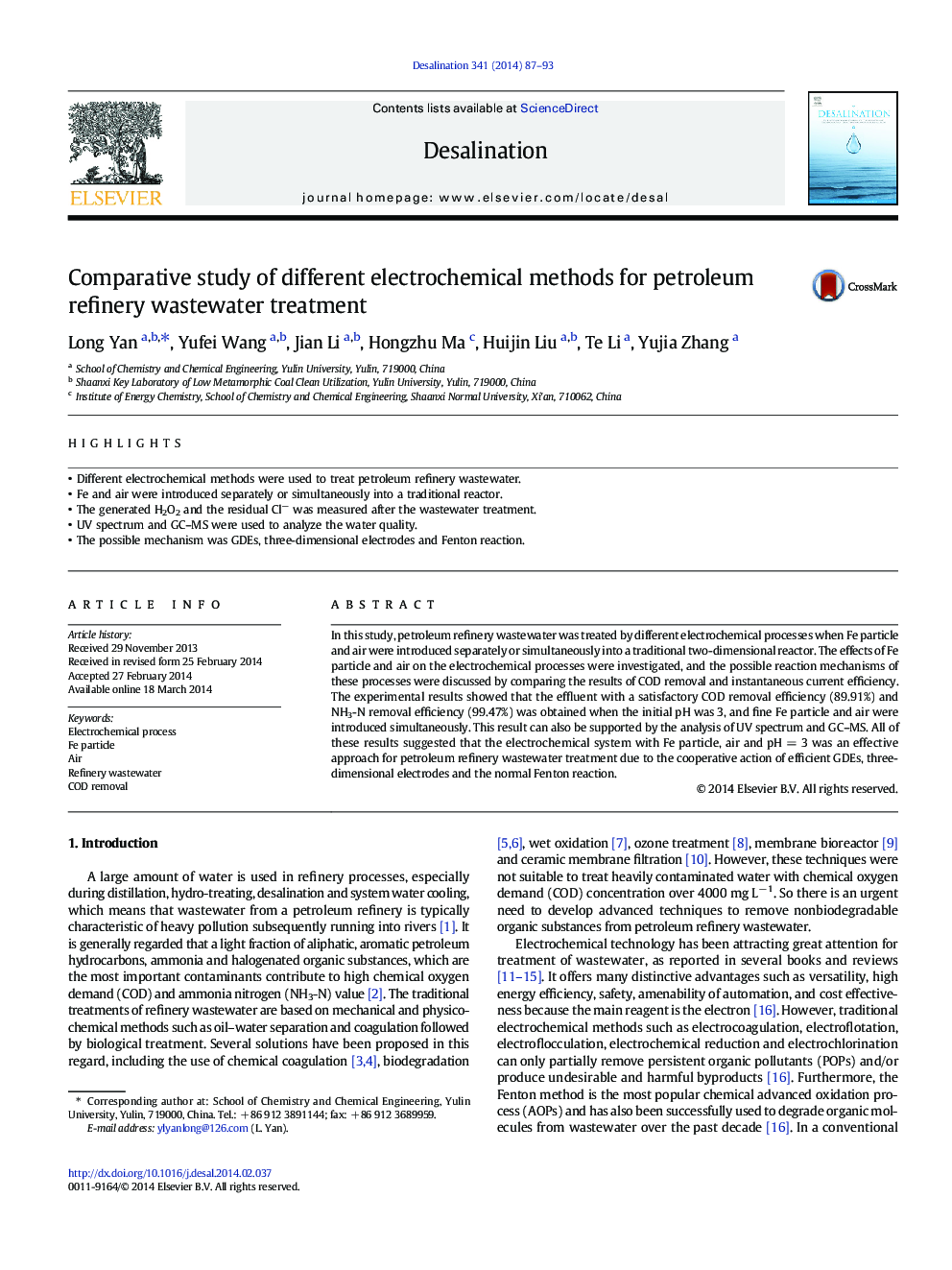| Article ID | Journal | Published Year | Pages | File Type |
|---|---|---|---|---|
| 623680 | Desalination | 2014 | 7 Pages |
•Different electrochemical methods were used to treat petroleum refinery wastewater.•Fe and air were introduced separately or simultaneously into a traditional reactor.•The generated H2O2 and the residual Cl− was measured after the wastewater treatment.•UV spectrum and GC–MS were used to analyze the water quality.•The possible mechanism was GDEs, three-dimensional electrodes and Fenton reaction.
In this study, petroleum refinery wastewater was treated by different electrochemical processes when Fe particle and air were introduced separately or simultaneously into a traditional two-dimensional reactor. The effects of Fe particle and air on the electrochemical processes were investigated, and the possible reaction mechanisms of these processes were discussed by comparing the results of COD removal and instantaneous current efficiency. The experimental results showed that the effluent with a satisfactory COD removal efficiency (89.91%) and NH3-N removal efficiency (99.47%) was obtained when the initial pH was 3, and fine Fe particle and air were introduced simultaneously. This result can also be supported by the analysis of UV spectrum and GC–MS. All of these results suggested that the electrochemical system with Fe particle, air and pH = 3 was an effective approach for petroleum refinery wastewater treatment due to the cooperative action of efficient GDEs, three-dimensional electrodes and the normal Fenton reaction.
